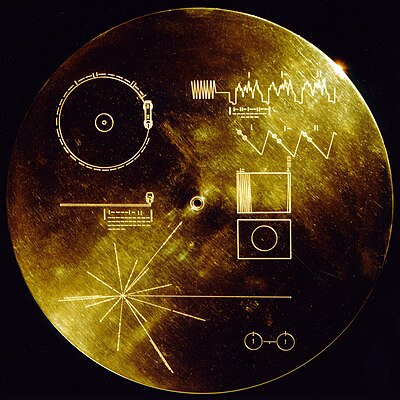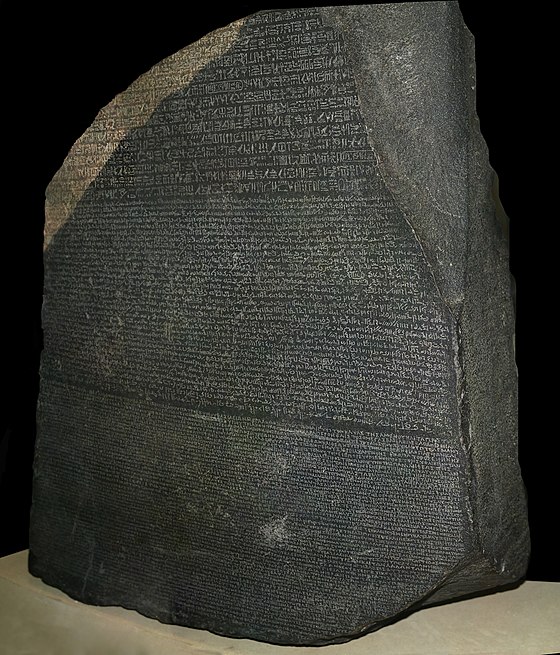In my previous post I mentioned that authors, whether or not they admit it to themselves, write in some faint hope that their written record may outlive them.
Hubris aside, this desire for legacy can also be questioned because of the naïve presumption that the words can actually persist beyond a few centuries, or even decades. Marshall McLuhan famously said ‘the medium is the message’ (by which was meant that the choice of means and transmission of the message was more impactful than the message itself) but this could also be restated as ‘the medium is the legacy’. If the creator hasn’t provided for the means to preserve their work, and retrieve it, it vanishes, and the longed-for legacy is lost. Hoping to be remembered is a mug’s game really, since in actuality the means to preserve and retrieve records is fragile and likely temporary.
Woody Allen, my favourite comic philosopher, may have said it best: ‘I don’t want to be remembered for my work, I want to be remembered from not dying’. And he has a point. How will all his films (celluloid and digital) be preserved for viewing, enjoyment, provocation, long after he and these media have vanished? (and many of you might also say, who cares about Woody Allen?)
But my point is, how can we ensure that anything that we wish to be preserved for posterity is actually accessible for posterity to experience? And begs, the question, how will that be accomplished?
NASA, under the guidance of the wise and idealistic American astrophysicist, Carl Sagan, sent messages to the universe on Voyager I and II in the form of a golden 162⁄3 rpm phonograph album (that wouldn’t corrode you see) containing music (a Beethoven quartet and Chick Berry’s ‘Johnny B. Goode’), descriptors of the human race, and our location in the Milky Way (which raised concerns amongst some paranoid critics: what if the disc was recovered by some hostile species, what then?!). The capsule also included instructions as to how a phonograph player could be constructed to allow the finder to get the message. I’m not sure what Marshall McLuhan thought of that.

We love to look at family photo albums, but if we are not careful, the photos fade, or become stuck to the photo album pages. And think of all those photographic slides we may have in their carousels in our basements, and no projector to view them.
So we digitize these photos and slides and copy them to hard drives on our computers, and to portable flash drives so we can preserve them on modern media. But these degrade, and the technology is already changing so that you can’t load the drive onto a next generation device, nor even read the files on the drives because the software has changed.
The same is true for print: the fragility of the medium means the loss of the content: print books until quite recently, were printed on acid treated paper and now we find the paper is rapidly oxidizing, yellowing and gradually disintegrating to dust[1], just like the author.
But we’ve become a paperless society; vulnerable paper has been replaced by electronic media and all those words are copied to plastic magnetic media – floppy disks! In my own time, even just the last 50 years we’ve seen 5 ¼ inch floppy disks, followed by 3 ½ inch rigid disks, followed by compact discs (CDs) with optical readers, and then DVDs (Digital Video Devices), then portable hard-drives, then solid state devices. How many of you still have some floppy disks in a cabinet somewhere (I confess I have, but as you know from my last blog, I’m a pack-rat) but no device that will read those floppy disks? If you have a recent model computer you don’t even have a CD or DVD drive and so can’t play your collection of music and movies any longer. And now your precious files and memories are stored on cloud drives, somewhere; and this means you have to pay a storage fee to keep them there, and an internet account to reach them, and passwords to access them, with all the attendant problems of passwords!
So what happens to those files, and the means to access them when you’re gone? Assuming your heirs even care, you better leave them the location, the passwords and the funds to maintain and retrieve those files.
I think most people struggling with the meaning of life, seek some sort of immortality. (I wrote about this in a previous blog post.) Call me egotistical if you like, or obsessed, I’ve thought of having a QR code engraved on my tombstone which when scanned by a suitable device (cell phone, tri-corder, whatever) the curious passerby could scan it, taking them to ‘the cloud’, and download my autobiography (My Story, Mostly) preserved for posterity on a server farm, somewhere. But, like cryogenics, somebody has to maintain those sites, and someone has to pay the subscription fee.
(I’m not actually kidding about this. I’m a long-time cemetery explorer (and I think many of you readers are as well, even if you keep this secret from your families) and I often stop in front of some ancient tombstone where the deceased beneath my feet was buried in 1938, or 1897 or even as far back as 1791 (if you can still make out the date on the eroded limestone) and all you see is the name, dates of birth and death, and a sentimental slogan – ‘ever in our hearts’ or some such – and you’re left to wonder, what was their story?)
So, modern technology may not be robust or have longevity to secure the legacy you desire.
Engraved monuments in cemeteries may serve better than paper and hard-drives but even these have a limited life span of perhaps 200 years.
Cuneiform clay tablets have lasted thousands of years in dry desert sands, but the script is readable by only a few. (This could also be the fate of English engraved on limestone I suppose.)
Egyptian tombs (also in desert-like conditions I might add) have lasted five thousand years but the engraved hieroglyphic messages were a mystery until Jean-François Champollion solved the puzzle with the help of the Rosetta Stone.

In 2022 I wrote a book – my autobiography in fact (My Story, Mostly) – intended as a record of my life and thoughts for the benefit of my children, and theirs, (and perhaps a few interested others). I gave a copy to each of them. They may never read it, but at least it is there to satisfy some future urge to ask about me; and it satisfies my need/hope to be remembered. But after my grandchildren are gone, no-one will remember me, and my books will long since have deteriorated to dust, or discarded to the scrap heap.
Even the electronic version of my books will have disappeared from long lost hard-drives and playback devices unless someone takes the time and effort to periodically refresh the files in the current media of the day.
The electronic files of all my books now live on lulu.com’s servers. But who is to say how long lulu.com will stay in business, or even if they do, maintain those long dormant files on their servers?
All of which serves to question why I bother. I should just accept the futility of it all. Unless you’re already famous of the order of Euripides, or Livy, or Confucius, you’re likely doomed to obscurity. Dickens, and even Churchill, are not safe, already fading from the erased slates of today’s educators. It may take another fifty years before my grandchildren, out of aging curiosity, crack open their copy of my book (assuming it’s in any condition to be read). But what of their kids? Will they care to know? I have a photo of my great grandfather, and his brother, standing in front of the family store. I don’t know their story, not even where their graves are. And that is a pity.
Doug Jordan, reporting to you from Kanata, Canada
© Douglas Jordan & AFS Publishing. All rights reserved. No part of these blogs and newsletters may be reproduced without the express permission of the author and/or the publisher, except upon payment of a small royalty, 5¢.
[1] And here’s breaking news, some engineer in Kentucky has developed a technique using CT scans to virtually unravel scorched velum scrolls recovered in their clay canisters from a Roman library AD 79 in Herculaneum.
